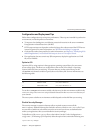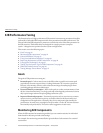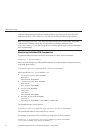
asadmin get --user admin --host e4800-241-a --port 4848
-m specjcmp.application.SPECjAppServer.ejb-module.
supplier_jar.stateful-session-bean.BuyerSes.bean-cache.*
The following is a sample of the monitoring output:
resize-quantity = -1
cache-misses = 0
idle-timeout-in-seconds = 0
num-passivations = 0
cache-hits = 59
num-passivation-errors = 0
total-beans-in-cache = 59
num-expired-sessions-removed = 0
max-beans-in-cache = 4096
num-passivation-success = 0
The monitoring command below gives the bean pool statistics for an entity bean:
asadmin get --user admin --host e4800-241-a --port 4848
-m specjcmp.application.SPECjAppServer.ejb-module.
supplier_jar.stateful-entity-bean.ItemEnt.bean-pool.*
idle-timeout-in-seconds = 0
steady-pool-size = 0
total-beans-destroyed = 0
num-threads-waiting = 0
num-beans-in-pool = 54
max-pool-size = 2147483647
pool-resize-quantity = 0
total-beans-created = 255
The monitoring command below gives the bean pool statistics for a stateless bean.
asadmin get --user admin --host e4800-241-a --port 4848
-m test.application.testEjbMon.ejb-module.slsb.stateless-session-bean.slsb.bean-pool.*
idle-timeout-in-seconds = 200
steady-pool-size = 32
total-beans-destroyed = 12
num-threads-waiting = 0
num-beans-in-pool = 4
max-pool-size = 1024
pool-resize-quantity = 12
total-beans-created = 42
Tuning the bean involves charting the behavior of the cache and pool for the bean in question
over a period of time.
If too many passivations are happening and the JVM heap remains fairly small, then the
max-cache-size or the cache-idle-timeout-in-seconds can be increased. If garbage
EJB PerformanceTuning
Chapter2 • TuningYourApplication 33


















